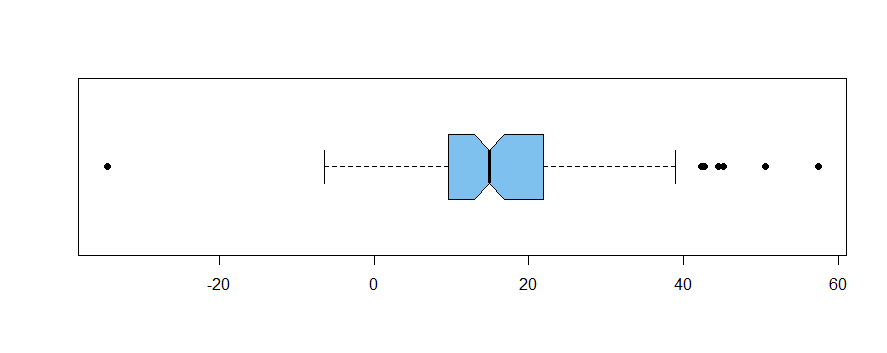It is not clear what kind of 'admission criterion' you want.
If the original paper used the interval $\bar X \pm S/\sqrt{n},$ then that is something like a 68% confidence interval.
If you are happy using confidence intervals, then a reasonable approach
might be to use the nonparametric CI available in R from the one-sample
Wilcoxon procedure.
Suppose you have Laplace data which shows more outliers than does normal.
Then to get a 95% CI that is reasonably robust to outliers you could use R as
shown below. (You can choose any confidence level you like.)
Nonparametric CIs for Laplace data. I used a Laplace distribution with centered at $\mu = \eta = 15.$
The Wilcoxon interval includes this value. (And so does the t interval, which assumes normal data and has a length slightly inflated by the outliers.)
set.seed(2019)
x = rexp(100, .1) - rexp(100, .1) + 15
boxplot(x, horizontal=T, col="skyblue2", pch=19, notch=T)
wilcox.test(x, conf.int=T, conf.lev=.95)$conf.int
[1] 13.41728 17.74237
attr(,"conf.level")
[1] 0.95
t.test(x)$conf.int
[1] 13.85243 19.03257
attr(,"conf.level")
[1] 0.95

The notches in the sides of the box show a nonparametric confidence
interval, the level of which is calibrated for a comparison of two
such boxplots (see R documentation).
Robust statistics. If you want to use median and MAD, you could use R to get the intervals below, as you suggest in your Question:
median(x) + c(-1,1)*mad(x)
[1] 6.361976 23.546726
median(x) + c(-1,1)*mad(x, const=1)
[1] 9.158873 20.749829
If you use mad in R, you should read its documentation page to
understand the role of the default built-in constant multiplier,
which you can override as in my second interval above.
Then I suppose you would want to do simulations based on several possibly relevant long-tailed
distributions in order to understand the coverage properties of whatever
type of interval you choose to use.

